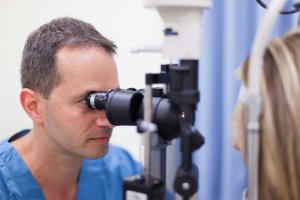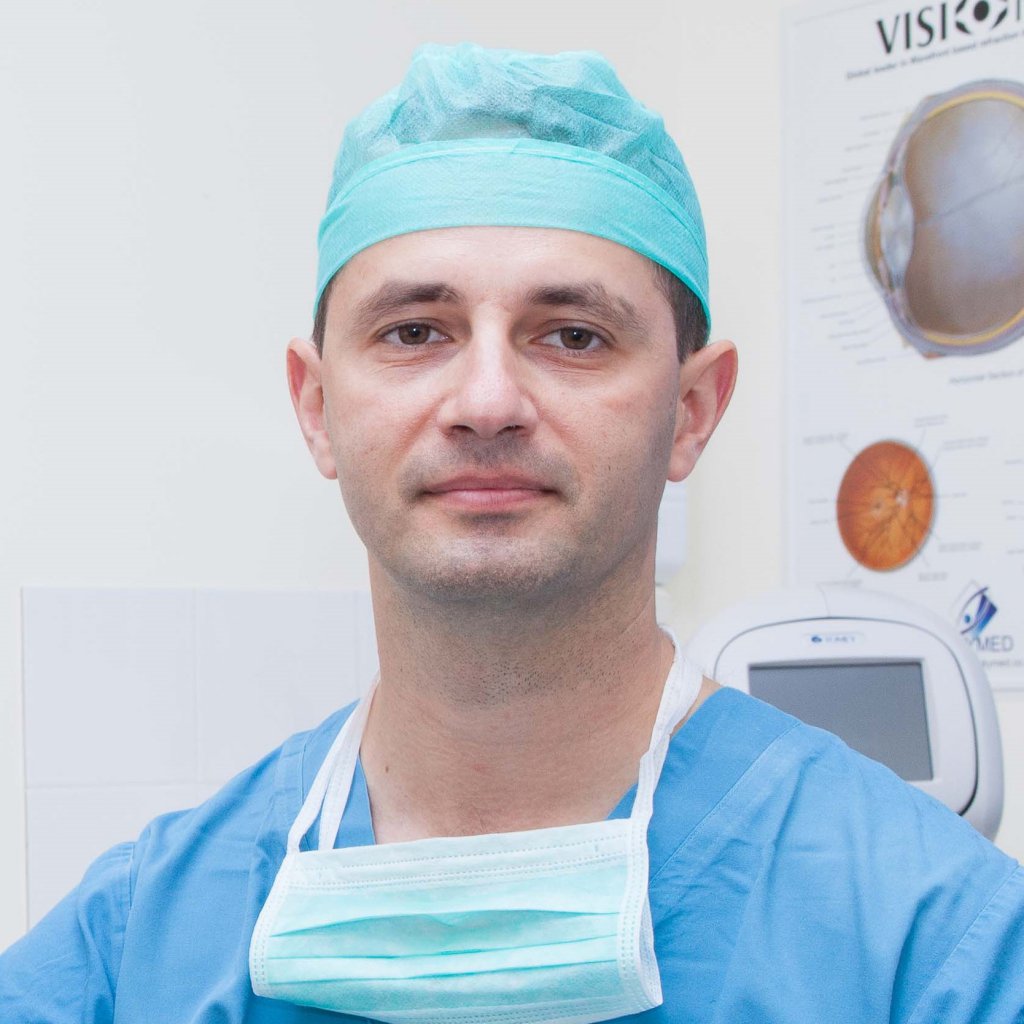Many articles and research papers have been written about cataract, its causal factors, means of diagnosis, and treatment.
The surgical process and all its stages are part of the routine work of physicians and therefore in their explanation to patients, they focus on the medical essence of the surgery and far less on the other details which accompany it. In a series of three articles, I will try to describe the stages of the process in detail, from the moment a cataract is discovered until the end of recovery from surgery. Those details, in my experience as a cataract surgeon, is what worry the patient.
I hope to make cataract surgery more familiar and reduce the level of stress and anxiety connected with the lack of knowledge about what is about to happen.
Sight is the most significant of the five senses in humans. From this, it is possible to understand the level of anxiety that exists when there is damage to vision. A cataract is the process of clouding over of the lens of the eye. How can you tell if there is a cataract? What are the signs due to which we go to see a doctor? Is it a dangerous process? Does it hurt? Will we recover from it? There are many questions like these that flood our thoughts and accompany you when you detect a change in your vision. The main sign of a cataract is the gradual deterioration in vision. This process is likely to continue for months and even years. Generally, the process does not occur simultaneously in both eyes nor to the same extent, and this is probably the reason that the deterioration of vision is not really felt. When the vision in one eye is normal relative to the other eye, we can continue to function routinely without sensing that the vision in one eye has deteriorated. These changes are discovered during at a routine examination at the ophthalmologist, so regular eye tests are important. An additional manner of discovering a cataract is when the eye which is less damaged, where the cataract is less advanced, is damaged due to inflammation, a foreign object entering etc. In this case, the patient is present to discover that the vision in the other eye is not normal. Aside from the decrease in vision, there are additional signs which could indicate the existence of a cataract such as: being blinded by glare (mainly while driving at night), or the need to replace spectacles frequently (every few months).
Disturbance of vision that is caused by the development of a cataract in the majority of cases is completely reversible by surgery. It is important to remember that in very advanced cases, the cataract causes additional problems in the eye, such as an increase in intraocular pressure or inflammation, which can cause irreversible damage.
In summary, I say that there is no need to rush into surgery. That said, neglecting the cataract to the extent that vision is almost completely damages is likely to cause irreversible damage or more complex and extensive surgery.
Ophthalmologist’s Examination
The doctor’s examination does not hurt at all.
First, the doctor will conduct a conversation with the patient in order to understand why he has come to see him. He asks a series of questions related to the status of vision, such as: when did the deterioration of vision begin? Were there problems with the eyes in the past? How does the decrease in vision present? etc.
It is very important to share all relevant medical information with the doctor and note if there is a lazy eye, history of eye problems during childhood, previous eye surgeries or trauma to the eye, medications that are taken regularly and the reasons for taking them. It is a good idea to bring your spectacles (if you wear them) to the examination as well as eye drops, if you use them. You should get a summary from your general practitioner (family doctor) which includes background illnesses, medical history and the list of medications that are taken regularly. There are many diseases that have an effect on the eyes and can influence the surgical procedure and its results. Despite the effort that the healthcare system in our country makes, the detailed information in the hands of the general practitioner is not necessarily available to a doctor outside the HMO, at the hospital or at private clinics. Due to this, it is recommended that the patient arrives at the examination with all the relevant information stated above.
The clearer and more complete a picture the doctor has regarding his patient, the better he will be able to give a diagnosis, explanations and more precise treatment.
The moment of the examination has arrived, and I am full of hope that I can take away the feeling of pressure accompanying you as you arrive for it.
The entire visit lasts for about an hour. The eye examination takes approximately 10-20 minutes with a pause in the middle of about 20-30 minutes which is the waiting time for the pupil-dilating drops to take effect.
First, the doctor will want to check the status of vision in each eye separately – here I remind you again to bring your spectacles for distance and reading, those which are best suited to you. Many times, patients claim to have forgotten their glasses at home or did not bring them because “they don’t help with reading anyway”. The glasses that you have with you assist the doctor in understanding the problem and in giving you information about the status of your vision.
At the end of the vision examination, the eye examination will be performed. The examination is performed using a device which looks like a microscope, with light. This device allows the eye to be viewed from the outside and inside and to understand the level of cataract and what additional problems may interfere with vision or the surgical procedure. The examination does not involve pain or discomfort, apart from blinding from the glare. You can be comfortable and relaxed, and the more relaxed you are, it will be easier to conduct the examination more precisely. The chin is rested on the device itself; the forehead is brought towards the upper part of the device and the head is fully supported with no need to hold it in the air. The doctor moves parts of the device so that they are suited to each person according to his dimensions. The height of the chair can also be adapted so that it is comfortable for the duration of the examination. Sitting comfortably is important for the patient as well as the doctor. After being placed in the correct and comfortable position, the doctor brings the device close to the eye. The sensation you will experience is that it touches your eyes, but not so much (except in the case if checking pressure in the eye. All you must do is follow the instructions about which direction to look, and despite the glare from the light coming out of the device, to keep the eyes open and relax the muscles. You are not required to see anything, the attempt to see and pick out details causes the eyelids to close together slightly. The instinct is often to close the eye, and then the doctor assists the patient in opening it by lifting the upper eyelid. The more you cooperate, the faster and more efficient the examination will be. The key word is “relax”. Another detail which is important is to have both eyes open for the duration of the examination. Closing one eye causes the other to roll upwards, making the examination more difficult.
Twice or three times during the examination, drops will be put into the eyes. You will be asked to look upwards so that the doctor can place the drop onto the lower part of the eye. If you have followed the doctor’s instructions, you will not see the bottle or the drop coming towards you, and you will not feel the need to close your eyes. Trust him and help him to do is work properly. The drops burn a bit for a few seconds after being placed, and this varies from patient to patient. It is not a good idea to rub the eyes or put pressure on them, as this could increase the burning sensation. It is advisable to blink a few times and wipe the closed eye with cotton wool (that you receive or can ask the doctor for).
The pupil-dilating drops are administered to allow the doctor to check the eye in depth. After administering the drops, you must wait for 20-30 minutes. These drops are temporarily blinding from glare and cause blurred vision, but there is no need to worry as these symptoms pass after 3-4 hours. It is a good idea to come equipped with sunglasses and accompanied by somebody.
It is important for me to state that after the examination driving is forbidden.
For the examination of intraocular (inside the eye) pressure, there is slight contact of the device with the eye. Before the examination, anesthetic drops are administered so that you will not feel anything in the eye. The eyelids are not numbed and if you try to close the eye there will be an unpleasant sensation. Therefore, you really should listen to the instructions. You will be asked to look forward with the other eye, or in the direction of the doctor. Look with the eye that is not blinded by the glare and continue to keep your eyes open. Do not move your head, and the examination will be over within a few seconds.
At the end of the examination, the doctor will be able to determine the level of cataract and the need for surgery as well as if there are any additional problems in the eye which are likely to influence or interfere with the surgical procedure. The examination will also assist the doctor in determining the kind of lens that will be implanted in the eye. If the deterioration in vision is caused only by the cataract, the surgery will fully correct it. If there are other illnesses causing disturbance to vision such as problems with the optic nerve, the brain or retinal diseases, the surgery to remove the cataract will only partially improve vision.
The biometric test, or as the doctors call it “lens measurement”, is an integral part of the examination that is conducted prior to surgery. It can be performed together with the eye test or at a later date. During the test, a number of measurements of the eye are taken, thereby allowing the lens number to be implanted to be determined. The duration of the test is around 5 minutes, during which you will be asked to rest your head on the device (as you did for the eye test), and look at a particular target in the device, usually a red dot. You must have both eyes open for the duration of the test.
Sometimes you will be asked to complete other tests which also require pupil dilation. These tests may cause the date of surgery to be postponed. There is no need to feel under pressure, as in most cases surgery is not urgent.
Summary conversation with the doctor
At the summary conversation the findings will be presented in clear and understandable terms. You will receive an explanation about the different types of lens implant which exist – single or multifocal, and whether there is a need to correct cylinder as well (if necessary), and of course the type of anesthetic – local or general – according to the case. This is the stage where you can ask all the questions, share whether you have concerns and glean information about the process. You do not have to decide anything at that moment. You can always say that you want to think about it and then give a response.



